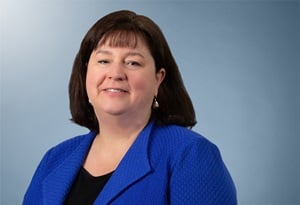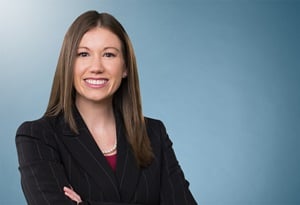SDNY Vacates DOL Regulations Implementing the Families First Coronavirus Response Act
On August 3, 2020, the Southern District of New York’s August 3, 2020, ruling in New York v. U.S. Department of Labor, et al., No. 1:20-cv-03020 vacated portions of the U.S. Department of Labor (DOL) regulations implementing the Families First Coronavirus Response Act (FFCRA). The following Q&A details the many ways in which the ruling will impact employers, including which DOL regulations were struck down by the order, the conditions under which employees can take FFCRA leave and the emergence of FFCRA-related lawsuits.
For a comprehensive overview of the FFCRA, please read our Families First Coronavirus Response Act FAQ.
What aspects of the DOL’s regulations were struck down by the SDNY order?
On August 3, 2020, District Judge J. Paul Oetken of the Southern District of New York issued an order vacating the following portions of the DOL regulations implementing FFCRA:
- The requirement that work must be available to an employee as a condition of eligibility for FFCRA leave.
- the definition of “health care provider” qualifying for an exemption from FFCRA leave.
- the requirement that an employee obtain employer consent in order to take FFCRA leave intermittently in circumstances unrelated to illness.
- the requirement that an employee provide documentation supporting the need for FFCRA leave prior to taking such leave.
Does the SDNY’s ruling impact FFCRA covered employers nationwide?
Possibly. While it is clear that the SDNY decision is binding over employers with employees working in New York, the order does not specifically address the scope of its application. We anticipate that we will get more clarity as to the geographic impact of the ruling from watching the DOL’s next steps. Specifically, the DOL is likely to appeal parts, or all, of the SDNY decision and, if so, will seek a stay pending the appeal. Alternatively, the DOL could issue new regulations, or simply modify their enforcement position and update the DOL’s FFCRA Questions and Answers to align with the SDNY decision. In the meantime, all FFCRA covered employers with operations in New York should amend their policies and practices to comply with the order, and all other employers should consult with legal counsel before denying any requests for FFCRA leave.
Are employees who are on unpaid furloughs now able to take FFCRA leave?
Yes. The SDNY order vacated the work-availability requirement, which previously provided that employees are not entitled to two weeks of EPSLA: (i) if they are subject to a federal, state or local quarantine or isolation order related to COVID-19, (ii) if they are caring for a family or household member who is subject to a quarantine or isolation order or who has been advised by a health care provider to self-quarantine due to concerns related to COVID-19, or (iii) if they are caring for a child whose school or place of care is unavailable due to COVID-19, nor entitled to 10 weeks of EFMLA leave unless their employer “does not have work” for them. In other words, the DOL’s final regulations required the FFCRA qualifying reason to be the “but for” cause of the employee’s inability to work, and reasoned that, if the employer had no work available, the FFCRA qualifying purpose was not the cause of the employee’s inability to work. As a result, many employees who were temporarily furloughed due to lack of business were deemed ineligible for FFCRA leave, regardless of whether they had a qualifying reason under FFCRA.
The SDNY order vacated the requirement that work must be available to an employee as a condition of eligibility for FFCRA leave. Accordingly, employees who are on furloughs or other leaves of absence may be entitled to paid leave under FFCRA if they have a qualifying purpose, even if the employer has no work for them.
Are health care providers still exempt from FFCRA leave?
Yes, but the definition has changed making more individuals eligible for paid leave under FFCRA. Recognizing the need for essential health care workers during a pandemic, Congress created an exemption permitting employers to exclude health care providers from FFCRA’s paid leave entitlements. FFCRA incorporated the FMLA’s definition of health care provider (medical and osteopathic doctors and others who provide health care services) but authorized the Secretary of Labor to issue regulations further defining those “health care providers.” The DOL’s regulations significantly expanded that definition to include anyone employed at any doctor’s office, hospital, health care center, clinic, post-secondary educational institution offering health care instruction, medical school, local health department or agency, nursing facility, retirement facility, nursing home, home health care provider, any facility that performs laboratory or medical testing, pharmacy, or any similar institution, employer or entity. The court struck down the definition as “vastly overbroad” because its application excluded “employees whose roles bear no nexus whatsoever to the provision of healthcare services” from paid leave under FFCRA.
Now, health care entities, particularly those in New York, should exercise caution before denying an employee FFCRA leave based on the health care provider exemption. Prudent employers should apply the exemption to the following health care providers, in line with the FMLA and corresponding regulations: doctors, podiatrists, dentists, clinical psychologists, optometrists, chiropractors, nurse practitioners, nurse-midwives, clinical social workers, physician assistants, and any health care provider accepted by the employer’s group health (or equivalent) plan.
Can on-site employees take EPSLA due to COVID-19 related illness, isolation or quarantine orders intermittently?
No. The court upheld the regulations prohibiting intermittent leave in those circumstances as it “advances Congress’s public-health objectives by preventing employees who may be infected or contagious from returning intermittently to a worksite where they could transmit the virus.” However, to the extent that an employee is able to telework, they may be able to take leave intermittently for illness-related reasons, since there is no public health risk of exposing others to the virus in the workplace.
Do employees need the employer’s consent to take FFCRA leave intermittently in circumstances unrelated to illness?
No. The SDNY set aside the part of the regulation requiring an employer’s approval to take intermittent leave in circumstances unrelated to illness since it does not implicate public health concerns. Therefore, employees may take EPSLA and/or EFMLA to care for a child whose school or place of care is closed due to COVID-19 intermittently without the employer’s consent.
What happens to any remaining unused time when an employee takes FFCRA leave in a single block?
Any remaining unused time can be applied to another qualifying leave under FFCRA in the future. The court confirmed that FFCRA may be taken in multiple blocks for separate qualifying purposes (without forfeiting unused leave) for as long as the employee has leave remaining. This is an important reminder for employers to document any authorized leave entitlements and track usage and exhaustion.
Can an employer deny an employee’s request for leave until receiving documentation?
No. The court invalidated the requirement for employees to submit documentation as a precondition to taking the leave. Employers may still request notice of foreseeable leave as soon as practicable and may request documentation demonstrating the qualifying need to take EPSLA or EFMLA, but should not deny the leave request in the interim. This is consistent with current guidance issued by the Centers for Disease Prevention and Control (CDC), Occupational Safety and Health Administration (OSHA) and Equal Employment Opportunity Commission (EEOC), which encourage employers to be flexible and provide leave when an employee is ill to reduce viral transmission in the workplace.
Can employees bring a cause of action under FFCRA?
Yes. We are starting to see lawsuits for denial of FFCRA leave requests and retaliation for taking or requesting leave under FFCRA.
FFCRA expressly incorporates for its enforcement existing FLSA remedies provisions against employers who fail to comply with the EPSLA. The EPSLA treats denial of paid sick leave wages as a denial of minimum wages for FLSA purposes. Thus, employees denied their sick leave pay will have a cause of action to recover the sick leave pay, liquidated damages in an amount equal to the sick leave pay, interest, and attorneys’ fees. Employees will also be able to assert a collective action.
In addition, FFCRA expressly incorporates for its enforcement existing FMLA remedies provisions. This means that an employee who is not paid during the leave per the law or denied EFMLA will have a cause of action to recover damages (including lost wages, salary, benefits, and other compensation) or actual monetary losses resulting from the denial of leave (such as the costs of child care), with interest. If successful, the employee could also recover liquidated damages, attorneys’ fees and costs, and other reasonable costs. Employees will also be able to assert a collective action. An employer can avoid liquidated damages if they acted in good faith and had a reasonable ground for believing it was not violating the law.
Faegre Drinker’s Coronavirus Resource Center is available to help you understand and assess the legal, regulatory and commercial implications of COVID-19.



